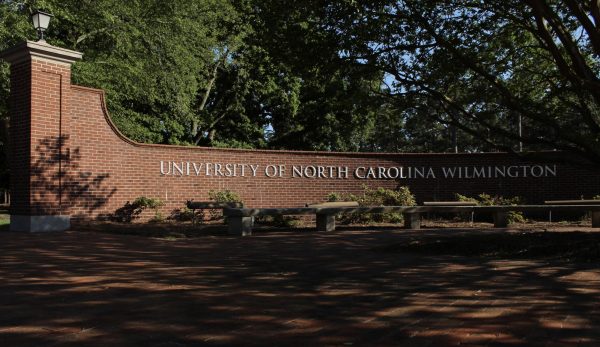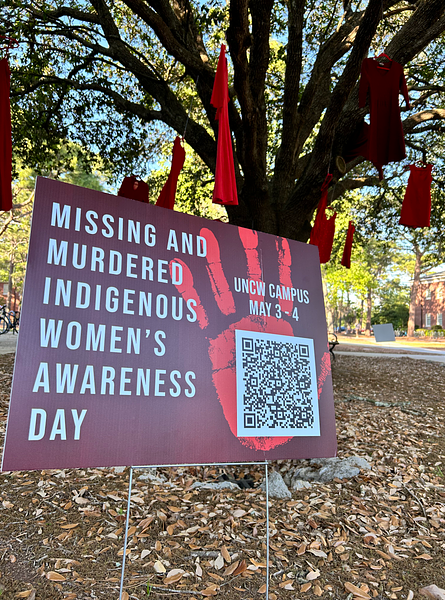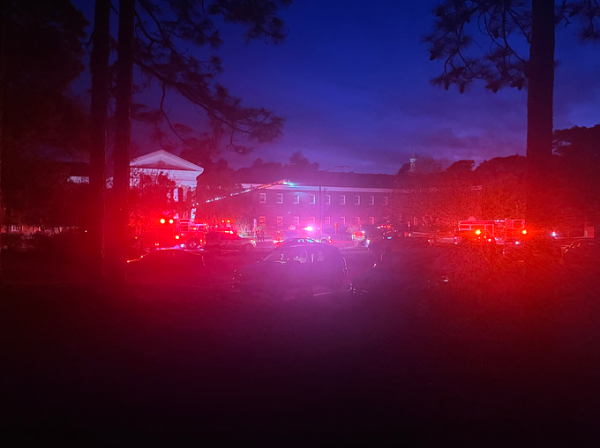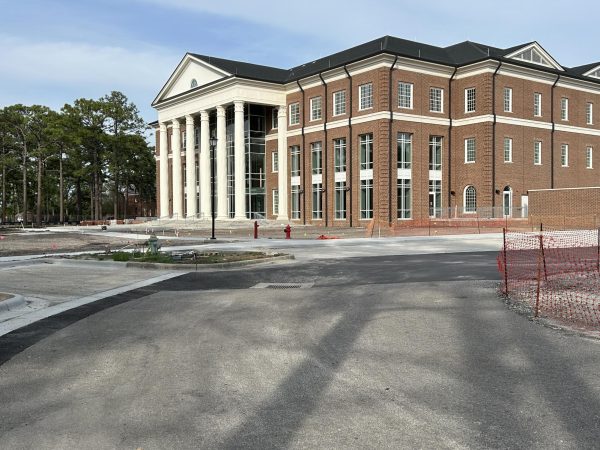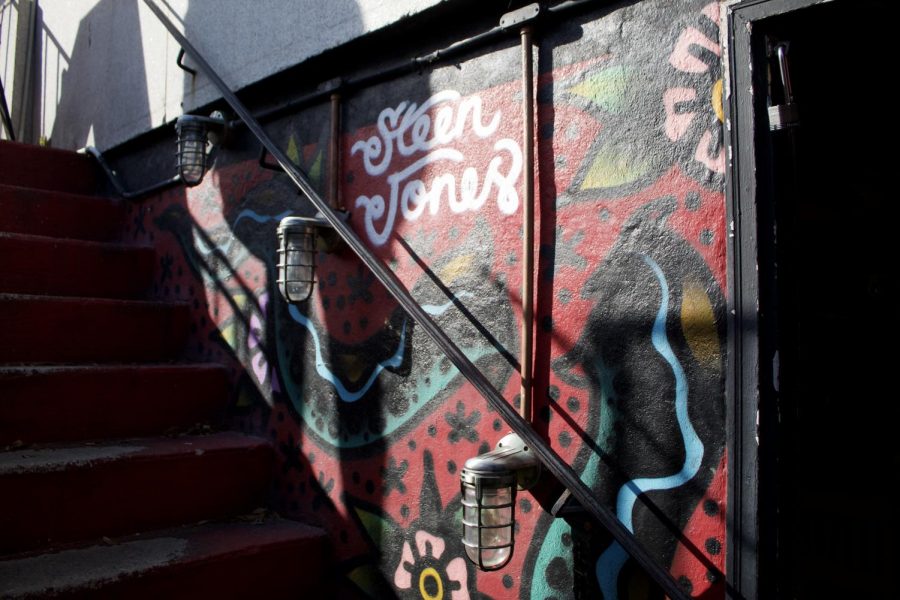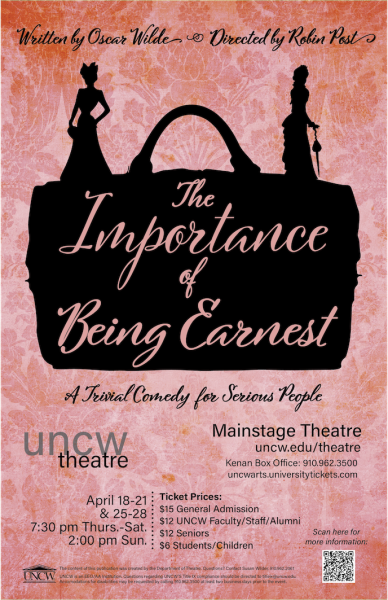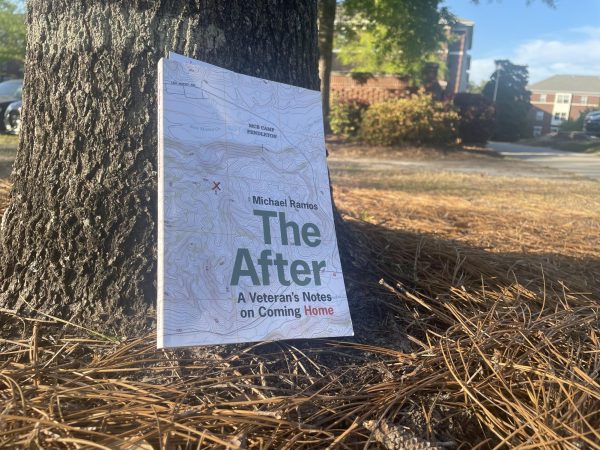Wilmington and the arts: One business owner’s fight to keep murals in Wilmington
March 23, 2021
For the most part, Wilmington murals are diminished onto basement walls, brick buildings and stairwells where passersby walk past without seeing their beauty and message.
The few that remain tell very specific stories. One mural painted on Princess Street features the North Carolina flag and the Cape Fear Memorial bridge; another mural is painted on the side of a brewery that advertises the product.
One local business owner, Joseph Apkarian, is fighting to save a mural on the basement walls of his bar, The Pour House. Depicting Sailor Jerry style tattoo art which refers to an art form inspired by a man who loved ships and used ships in his art to represent adventure as well as the determination to come back home.
Apkarian spent a generous portion of his life in the U.S Navy and Marine Corps. This art is just a piece of that life as well as a connection to his business and the life he’s made for himself here in Wilmington.
“Not only is it a part of the general style of the bar, but Sailor Jerry, traditional style tattoo art has roots within the military,” said Apkarian.
Wilmington’s historic codes were developed so that buildings may maintain their “historic character.” These guidelines were created by the Historical Preservation Commission—a 126-page document which offers a deeper understanding of what the city considers appropriate changes to their downtown historical look and feel. Codes were set in place to prevent the possibility of any art, signs, or other advertisements that may tarnish the historic ideals of downtown.
While the Historic Preservation Commission continues to enforce their rules and regulations against local art, Apkarian continues to fight the city for a Certificate of Appropriateness to be issued so the mural, painted by Apkarian’s friend and internationally recognized Australian artist Steen Jones can shape the feel of his business as well as add another piece to Wilmington’s story.
A Certificate of Appropriateness must be issued by the city for any changes to the character of the original building, major landscaping, building additions, or new parking lots. An application is required to be completed 30 days before the historical commission meeting and may cost between $20 and $100. Then, members of the commission will decide whether to approve the request.
Many buildings found in Wilmington’s historic heart of downtown have a place in Wilmington’s significant foothold in history. The Pour House building is one of these historical places, but the city is more focused on the artwork in the bar and in the stairwell, since it is said to be in violation of the historic code.
“How is the city going to come after me, while closed since March 17, mind you, and over a year after the mural has been there and tell me I’m in violation of Wilmington’s Historic Code? In a stairwell to a basement…that wasn’t even there when the building was built,” said Apkarian.
The stairwell in question was added in 2004, while the building itself dates back to the 1910s.
Wilmington’s appreciation and recognition of its history is evident with every trip downtown. This city’s history dates to 1725, when the first settlers arrived on the banks of the Cape Fear River.
One of the ways Wilmington remembers its vast history through houses marked as historical landmarks.
One of Wilmington’s first historical buildings called The Burgin-Wright House originated from the American Revolution. The battle of Moore’s Creek Bridge was fought just 20 miles away from Wilmington.
In the 1840’s, the first railroad that ran through Wilmington was constructed drawing more people into town through the railways. By the 1850’s several of Wilmington’s most well-known historic sites were built including Thailan Hall (now City Hall), the Latimer House Museum, and the Bellamy Mansion, a beautiful and original example of early 1800s architecture.
Some people think that appreciation for historic architecture has been taken too far.
“Here in Wilmington, we are more concerned with crumbling facades of old movie theaters on Front street than we are about the arts,” said Apkarian.
This is not the first time that art interrupting historical significance has come into question. In 2018, a muralist named Rob Fogle, who already painted two murals in Carolina Beach, faced a question raised to him by the city before even considering painting within Wilmington’s downtown district: Is art a welcome part of downtown or is it a public nuisance?
The municipal code states that art is desired to be incorporated into public gathering areas. After painting a mural in the Brooklyn Arts District, the city ordered Fogle to remove it for fear of how it may be appreciated. The city treats murals like signs or graffiti because it’s been written that way for a while.
“Sadly,” said Apkarian. “I do not think Wilmington is accepting of the arts. I think they/we are woefully behind the power curve when it comes to promoting a thriving arts and entertainment district for downtown, least of all showcasing mural art.”
